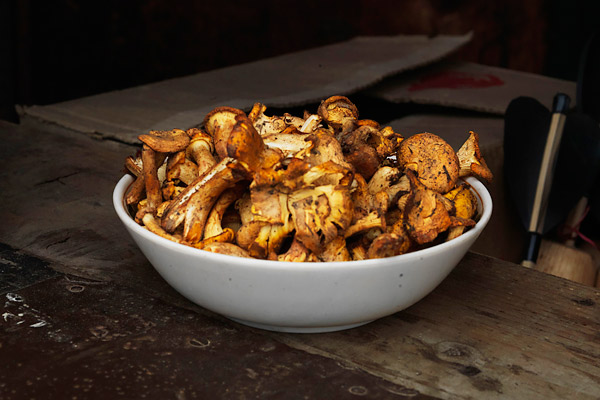Paro Taktsang, known as the Tiger's Nest, is an ancient Buddhist temple perched 10,200 ft. above Bhutan's Paro Valley
I have a promise to break. Like any self-respecting writer visiting Bhutan, I solemnly swore on a stack of travelogues to avoid clichd references to Shangri-la, the mountain paradise of James Hilton’s novel Lost Horizon. So sue me: Bhutan, a nation of 700,000 souls in the lap of the Himalayas, is the closest thing to Shangri-la I’ve ever seen.
In a week of traveling through Bhutan, my wife and I have trekked up 10,200 ft. to an ancient Buddhist temple complex perched on the side of a mountain; we’ve shot arrows from a bamboo bow on the lawns of a monastery before an audience of novice monks (they giggled as I missed the target every time); we’ve had a bath in a tub heated by red-hot stones and infused with mysteriously reinvigorating herbs; and we’ve shared dinner with a reincarnated lama.

Bharat Sikka for TIME
And it hasn’t once felt as if we’re in some Himalayan equivalent of Colonial Williamsburg. To Bhutanese, these are everyday activities (with the possible exception of the herb-infused bath, which was a bit luxe). Bhutanese regard as normal what most others would consider magical: the forests of fir, pine and cedar draped over mountains wreathed in clouds; the hundreds of miles of nature trails, rising from deep valleys past meadows of grazing yaks and into the shadow of the high peaks; the stunning beauty of the Trongsa Dzong, a 17th century fortress overlooking a gorge on the Mangde River; and possibly the finest chanterelle mushrooms on the planet. Over and over again, as we struggle for words to describe what our eyes are seeing, Nima Dorji, our guide, smiles indulgently. “Nice, no?” he asks. Nice, yes.
It takes an outsidera Singaporean who lives in Thimphu, Bhutan’s capitalto capture most tourists’ impression of the country. “This is the last authentic place on earth,” says Siok Sian Pek Dorji, who runs the Bhutan Centre for Media and Democracy. “Nothing is canned. If you see a group of men with bows and arrows, they’re not playing archers for some tourist show. They’re doing it because it’s a part of their Bhutanese identity, and they love it.”
(PHOTOS: Travels Through Bhutan)
Authenticity is a rare and valuable commodity, and people will travel far to find it. But the authentic Bhutanese identity is under threat from several sides, starting with a surge in tourism: the construction sector is booming, helped by easy credit. A ban on television was lifted in 1999; you can see satellite dishes in tiny hamlets across the country. Teens at the Ser Khor karaoke bar in Thimphu can warble the latest Bollywood tunes with as much verve as they do Bhutanese pop songs. Plugged into the world via smart phones and Internet cafs, they’re adopting a global look and attitude: artfully distressed jeans, spiky hairstyles and an addiction to social media. Outside Wangdichholing Palace in Bumthang, the monastery-filled district that is the spiritual heart of this deeply religious country, the novice monk laying out his cloak to dry in the field is wearing a T-shirt with a picture of Lucy Liu.

Bharat Sikka for TIME
“Our world is changing very, very fast,” says Mynak Tulku, the reincarnated monk. “What the rest of you saw in 50 years, we’ve seen in just 10. So of course, some people are bound to feel shaken up.”
Anxiety over the end of Bhutan’s innocence coincides with yet another modern innovation that is transforming the country: democracy. In 2008, Bhutan elected its first government. The event was marked by polite speeches and an absence of the rancor we’re used to in the U.S. Now the administration of Prime Minister Jigmi Yoser Thinley must figure out how to balance the demands of democracy with saving Shangri-la.
The Dragon King
Though it’s wedged between Asia’s biggest countries, China and India, Bhutan has a strong cultural identity of its own. The majority of the population follow Vajrayana Buddhism; the Dalai Lama, of neighboring Tibet, is respected, but Bhutanese heed their own set of spiritual guides. The national cuisine, which relies heavily on chilies and cheese, is distinct from others in the region. Bhutanese traditional dressespecially the gho, a man’s knee-length robe with distinctive cuffsand language are substantially different from their Tibetan roots. Even the architectural style, characterized by intricately paned windows and doors, is rarely seen outside Bhutan.
For the best part of four decades, this singular culture was protected by the sheer will of an enlightened monarch: Jigme Singye Wangchuck, the Druk Gyalpo (Dragon King). Most Bhutanese refer to him simply as K4 — for he’s the fourth in a line that goes back to the beginning of the last century. To me, he’ll always be Jigme, the most popular boy in St. Joseph’s College in Darjeeling, India, where we both went to school.
Only 16 when he ascended to the throne in 1972 — I was in first grade then and knew him mainly as goalkeeper of the senior soccer team — K4 inherited an impoverished nation with few resources beyond jaw-dropping natural beauty. (The landscapes made little impact on me when I went to Thimphu for K4’s coronation, but then, first-graders aren’t overly impressed with picture-postcard vistas.) Bhutan’s only serious means of revenue was tourism, but as he looked west to his country’s neighbor Nepal, K4 saw a cautionary tale. The larger Himalayan kingdom was overrun with backpackers and hippies, many of them drawn by Nepal’s abundant supply of wild marijuana. These low-budget tourists were perhaps doing more harm than good to Nepal’s economy.

